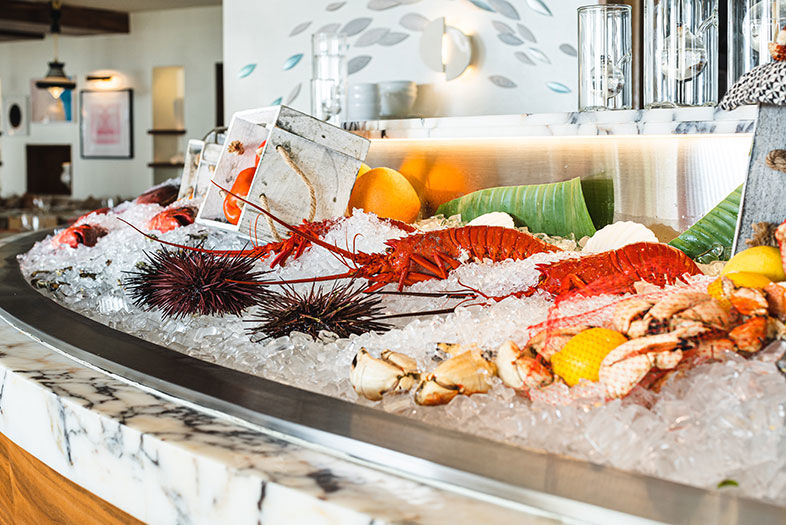Every year at this time the media landscape launches an avalanche of “trend” predictions for how we’ll eat and drink. I never shy away from a good avalanche. But some of the predictions border on downright kooky (last year, the almost always very good New York Times declared mushrooms the “new ‘it’ vegetable).
Personally, I like to combine the stats and facts of the industry with the observations of my own work (which is studying food and talking to chefs, foodmakers, bartenders, etc.). Stats aren’t perfect. They’re like Legos of logic—you can use them to create any argument you want. But after another year of talking to chefs and restaurant owners, and paying attention to trends, I feel honest putting these stats together the way I have—the three biggest trends I see really truly coming in 2020 food and drink scene.
Prediction: “Food Waste” will be the buzz phrase of the year
Fact: In the U.S., between 30-40 percent of food is wasted (133 billion pounds, worth $161 billion).
Fact: Every day, Americans waste enough food to fill the Rose Bowl.
Fact: According to Jonathan Bloom’s book, American Wasteland, a half pound of food waste is created for every meal served in a restaurant.
Observation: San Diego restaurants are doing what they can. At Wrench & Rodent, chef Davin Waite will start asking customers to voluntarily pay a surcharge to support Zero-Footprint, which is paid to farmers investing in regenerative farming. Chef JoJo Ruiz convinced the Hotel Del Coronado to buy fish from local, sustainable fishermen and women for its new restaurant, Serea. Chef Kevin Templeton at Barleymash personally hauls the restaurant’s compost to Olivewood Gardens & Learning Center in National City. In North Park, the restaurant and cidery Bivouac uses “waste” from the cider-making process in its menu recipes.
Fact: California’s plastic straw ban went into effect in 2019, but exempted the biggest offender: fast food chains. A once-famous San Diego restaurant tradition—Corvette Diner’s servers making plastic straw designs for kids—was discontinued.
Fact: Frea in Berlin became the world’s first vegan and zero-waste restaurant this year. Metta in Brooklyn became New York’s first zero-waste restaurant. San Diego does not yet have a zero-waste restaurant. The Plot, an upcoming project from Davin Waite and his wife, Jessica, aims to be the city’s first.
Prediction: Plant-based food will explode
Fact: Though vegetarianism and veganism seems to be all the rage, most estimates say only about than 5% of Americans identify themselves as such.
Fact: However, the youngest generation dictates the future. The Economist reported that “nearly a quarter of 25- to 34-year-old Americans say they are vegan or vegetarian.“
Fact: Plant-based protein companies are booming. Burger King, Red Robin, and QDoba are now serving plant-based “meat” from Impossible Foods. You can find their competitor, Beyond Meat, at Albertson’s, Kroger, Wegman’s Whole Foods, Carls’ Jr., Del Taco, and TGI Friday’s.
Observation: The plant-based movement is finally taking off because the world’s best chefs are lending in their skills. “Vegetarian” is no longer code for “tastes like dirt.” Famed San Francisco chef Tracy des Jardin is the culinary advisor to Impossible. In New York, Jean-Georges Vongerichten has an entire plant-based restaurant, ABCV. Napa’s famed restaurant, The French Laundry, now has added a permanent vegetarian tasting menu. Even at San Diego’s top steakhouse, Cowboy Star, chef-partner Victor Jiminez’ staff will cook entire custom vegetarian or vegan meals for diners who ask.
Prediction: Kiosks will serve you
Fact: The minimum wage rose to $12 in California. It will reach $15/hour in 2023.
Fact: 43 U.S. states allow restaurant owners to count tips as earnings. California lawmakers opted not to. Here are some problems with that, including income disparity between servers and cooks.
Observation: In the last few years, the number one thing restaurateurs have told me, mostly off the record, is that they are getting rid of server staff to deal with rising labor costs. The owners of two high-profile restaurants that closed this year told me labor costs were the major factor in their decision.
Fact: The fast-casual restaurant was the only corner of the food service industry to grow its traffic in the last five years.
Fact: Restaurants are turning to kiosks, whose market growth is predicted to reach $30.8 billion by 2024.
Observation: High-end restaurants and chain restaurants should be fine. The “raise without counting tips as earnings” will hit mom and pop restaurants the hardest, since they don’t have the financial backing or economies of scale.
Fact: Many believe tipping should be outlawed, based on its racist, sexist, classist implications.

Three Food Trends to Watch in 2020
PARTNER CONTENT
Serea emphasizes sustainability by buying fish from local, sustainable fishermen and women | Photo by Justin McChesney-Wachs

















